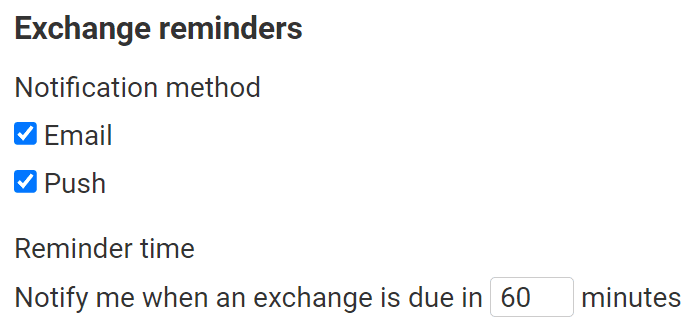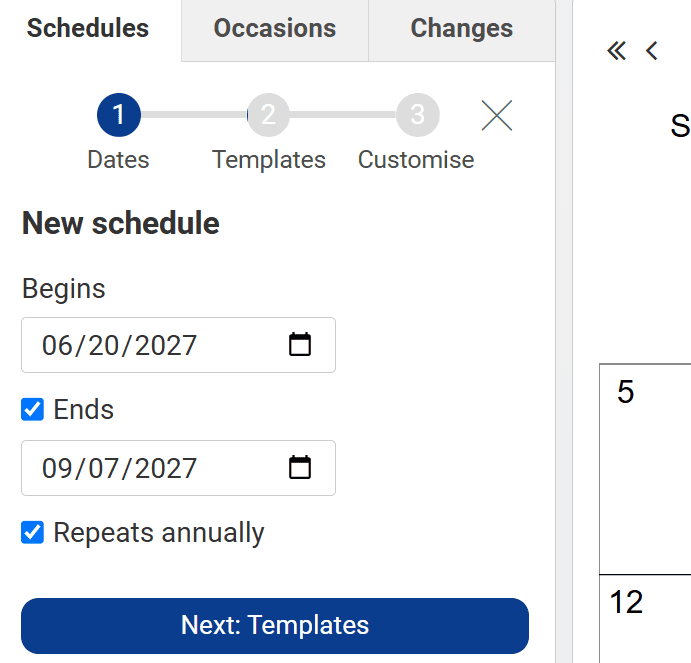Oregon Parenting Time Schedules (Visitation)
In Oregon, parents who are separating or divorcing must write a parenting time schedule. Put thought and effort into your schedule. It will create consistency for both of you and for your child.
Once a judge approves a schedule, you can make minor adjustments as you go (especially if you both agree to these changes), but you'll be expected to stick overall to the court order. If necessary, you can ask the court to change the order.
How you get a parenting time schedule
In Oregon, a parenting time schedule is part of a parenting plan, which you submit early in your court case.
Court templates for parenting plans ask you to verbally describe your schedule.
Many parents instead use the Custody X Change online app, which lets you add a visual calendar you can print for court.
Show the other parent your proposed schedule to let them know what you're asking for.
It's best to reach agreement. Doing so speeds your court case. A judge is likely to give you a schedule you agree to, as long as it supports your child's needs.
When parents can't agree, Oregon requires them to try mediation (unless the case involves abuse). Each county has its own deadlines for completing mediation. You can work on a schedule during these sessions. If mediation is unsuccessful, a trial can be scheduled.
How to choose the right schedule for your family
The court doesn't officially prefer equal or unequal time for each parent. However, if one parent asks for equal time and the judge orders unequal time instead, the judge must explain why.
Choose a schedule that's best for your child's needs. Younger children tend to thrive with frequent exchanges, while teens can go longer periods of time with just one parent.
Your co-parenting schedule:
- Creates stability for your child
- Defines when you and your co-parent are responsible for care, preventing misunderstandings
- Determines how many overnights your child spends with you, affecting your child support amount
If you have an older teen and you're amicable with your co-parent, it's possible that the judge won't insist on a schedule. However, Oregon courts usually require a schedule so they know who's caring for a young child and can hold parents accountable.
Equal time schedule ideas
If a judge orders equal time, they may designate one of your addresses as your child's primary address. This is so school administrations will know where your child is eligible to enroll.
For a young child (age 4–12), one popular option is a 2-2-5-5 schedule.
 You can customize this with Custody X Change.
You can customize this with Custody X Change.
Another is a 3-4-4-3 schedule.
 You can customize this with Custody X Change.
You can customize this with Custody X Change.
For older kids, alternating weeks can work well.
 You can customize this with Custody X Change.
You can customize this with Custody X Change.
Unequal time schedule ideas
An example of a 60/40 timesplit would be a 4-3 schedule.
 You can customize this with Custody X Change.
You can customize this with Custody X Change.
It's common that one parent has weekdays and the other has every weekend. This is a 70/30 split.
 You can customize this with Custody X Change.
You can customize this with Custody X Change.
If one parent has the child every other weekend, that's roughly an 80/20 split.
 You can customize this with Custody X Change.
You can customize this with Custody X Change.
Putting in details
Your schedule isn't complete until you've thought about details and special cases. Take time to think them through.
Exchanges
Your parenting plan is where you say how you'll communicate with your co-parent between exchanges, where you'll meet for exchanges, and how you'll inform each other if you're running late. Keep these logistics in mind when you propose your schedule.
Set the exact time of each exchange. Custody X Change can send you a notification.

Holidays
Specify the holidays that are likely to be important in the future. If you celebrate Christmas, does one of you care more about Christmas Eve and the other about Christmas Day? Will you each want to see the child for Mother's Day and Father's Day?
Summer breaks
Many parents use a different repeating schedule in summer. For example, if you have a 2-2-3 schedule during the school year, you might want a different schedule in summer so you can take vacations. Two weeks to one parent, two weeks to the other could be an option.

If you're having trouble following the schedule
Once you have a court order, you have to follow it. If you're having trouble, here are some tips.
Comply with as much as possible. For example, if one of you plans to move more than 60 miles from the other, typically you must give advance notice to the other parent and to the court. If you have to move at the last minute, give as much notice as possible. Following requirements to the best of your ability shows that you're trying.
Communicate about your specific issues. Minor issues don't have to derail your whole schedule. For instance, if text messages and phone calls are sources of conflict, the two of you might try messaging each other through Custody X Change. The app has a hostility monitor, which can limit conflict.
Go to mediation. A mediator can guide the two of you in discussing what isn't working and negotiating a compromise. You may hire a mediator privately or through the local court system. For example, Multnomah County family court mediation remains free of charge even after your case is over. This approach may help you avoid further court hearings and legal fees.
Try parenting coordination. If the court appoints a parenting coordinator (you can ask for this), this professional has legal authority to decide how you must interpret your court order. This approach can resolve specific disagreements or uncertainties — for example, about a holiday you forgot to include in your schedule or about the exact time or place of exchanges.
Request a hearing. File a motion to modify parenting time (which costs about $50), then give a copy to the other parent. If they won't sign an Acceptance of Service, you'll have to serve them formally (which may cost another $50). The court will schedule a hearing within 45 days. The court may require you to try mediation first, and you'll have to pay for that too.
If the court decides that one parent has violated the court order, it can award makeup time.
The court can also modify the schedule to meet the child's needs and to make it more reasonable and comfortable for both parents.
The easiest way to make a schedule
If you're like most parents, creating a parenting time schedule will feel daunting. How do you make something that meets legal requirements and doesn't leave any loose ends?
The Custody X Change app makes it easy. Either customize a schedule template, or click and drag in your custody calendar to make a schedule from scratch.
Try this with Custody X Change.
Then watch a full description appear in your parenting plan.
Try this with Custody X Change.
You and your co-parent can keep using the app to be notified of upcoming exchanges and to share your minor rescheduling adjustments.
The combination of a visual and written schedule easily communicates who has the child when. Take advantage of Custody X Change to make your schedule as clear and thorough as can be.
